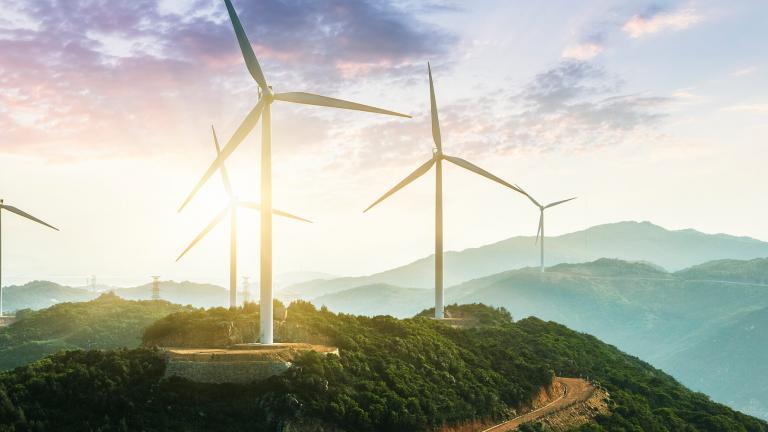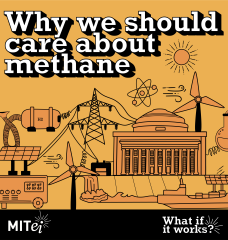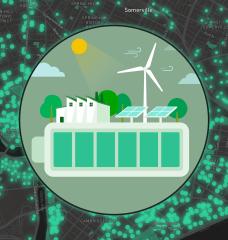
Why it Matters
Because…
“There is no planet B.” (Prof. Mike Berners-Lee, Lancaster University).
And because we have scorched the snake (climate change) and not killed it!
The history of discussions on trade and climate change is mostly a record of tensions. The objectives of trade and climate change are mostly seen as being in opposition. This tension between trade and climate change has arisen in part because of the assumption that climate change action (e.g., carbon price increases) can be taken as a given.
The question that many papers adopt is, given this assumption, what is best from a trade perspective. But this paper adopts the approach and proposals which are predicated on the current reality that action on climate change is proving fiendishly difficult. The relevant question then is: can trade rules be designed or changed to facilitate—in any way, direct and indirect, economic and political—climate change action without unduly damaging trade?
The research on the links between trade rules and climate change action has mostly been concerned with how far climate change action is constrained by current trade rules pertaining, for example, to border tax adjustments (Horn and Mavroidis 2011), subsidies (Green 2006), and exports of natural gas (Levi 2012 and Hufbauer, Bagnall, and Muir 2013).
This to address the issues, the post-2015 development agenda underpinned by the Sustainable Development Goals (SDGs) and the Paris Agreement brings together the two grand frontiers - climate change and sustainable development.
The Paris Agreement and Parties' commitments - the so-called Nationally Determined Contributions (NDCs) - will mean big changes for their trading partners as the effects of those commitments start playing out in trade flows and trade policies around the world. A spectrum of alternative ways of reacting to this new reality has already been foreshadowed by competitiveness concerns, with trade traditionally being treated as part of the problem. It is even more important to take a closer look at the large - and largely unexplored area - potential for trade to be part of the solution.
On the other hand, the world faces the challenge of meeting the increasing demands of economic development while safeguarding its natural resources and the environment, and dealing with the effects of climate change. The issues of climate change, growth, and poverty reduction are inextricably intertwined. Failure to manage climate change will undermine development and poverty reduction; failure to promote development and reduce poverty will further exacerbate climate change.
At the same time, the current global decline in environmental stability is highly connected and vulnerable to the adverse effects of climate change. Preventing risks linked to the impacts of climate change, including extreme meteorological events, climate variability, and accelerated sea-level rise is, therefore, a crucial issue for all nations across the globe. Accelerating the level of investment in adaptation and mitigation measures is seen as crucial, further to the adoption of the Paris Agreement and in view of the greenhouse gas (GHG) emission levels and the severe climate disruptions experienced in the countries.
Today it is still seen that trade requires unsustainable levels of resource consumption, waste produced and discarded, contributing to surging GHG, pollution, and biodiversity loss. For example, emissions from the transport sector, the backbone of international trade, are growing rapidly and represented, in 2015, around 18% of all man-made CO2 emissions.
Meanwhile, recent extreme weather events such as flooding and hurricanes have illustrated the vulnerability of the supply, transport, and distribution chains that underpin modern-day trade. These events, as well as natural disasters, failure to mitigate or adapt to climate change and water crises, rank among the top five risks in terms of their perceived impact within the next ten years.
Need for a Climate-friendly Trade Mechanism
To counter these developments, we need trade and environmental governance to reinforce one other and foster resilience. This can amplify good practices, sustainable production and consumption, investments in the environment, and the development of green technologies. In fact, G20 countries could lift their average economic output by up to 2.8% by 2050 through a combination of policies to mitigate climate change and foster investment in low-emission, climate-proof infrastructure. Coherent trade and environment policies can further support less-developed economies to integrate into green global value chains through open markets.
Trade cannot be a goal in itself. Trade must drive a better, greener, and more inclusive future. Hence, to make green products available to all, we need trade policies that promote innovative solutions and reduce tariff- and non-tariff barriers to the import and export of these goods. We need to cut red tape and barriers for trade in sustainable goods and services, including environmentally sound technologies. We also need trade policies that connect sustainable production with sustainable consumption and promote a broader shift that helps consumers to make better choices.
Global trade governance must evolve and become a true ally of multilateral efforts to protect the environment, including the Paris Agreement. Carbon pricing could serve as a mechanism to reduce the global footprint of trade and encourage investment in green sectors. The global trading system must also actively contribute to eliminating environmentally harmful practices. New international trade rules on fossil fuel and fisheries subsidies will not only benefit the environment, but they will also promote a fairer trading system. Removing fossil fuel subsidies, for example, would raise government revenue by USD 2.9 trillion, while also reducing global carbon emissions by more than 20% and air pollution-related deaths by 55%. Environmental ministries and action groups should be closely involved in these negotiations.
Role of the Emerging and Developed Countries
To delay acting on climate change is to run great risks of fundamentally rewriting the relationship between human beings and the planet. The risk of inaction includes drastic environmental decay, frequent natural disasters, and genetic abomination among the future generation. Droughts and changing global rainfall patterns are leading to crop failures and rising food prices, which for the poor mean food insecurity and nutritional deprivations that can have lifelong impacts. These also have the potential to destroy livelihoods, drive migration and conflict, and cripple opportunities for children and young people. Children are the most vulnerable to diseases that will become more widespread as a result of climate change, such as malaria and dengue fever. Close to 90% of the burden of disease attributable to climate change is borne by children under the age of 5. More importantly, these disasters are relaying other circumstantial dilemmas such as international trade war, economic instability, and imbalance in the global geopolitics.
Thus, a new energy-industrial revolution is crucial. Realizing this transformation will require both leadership and collaboration. Seemingly, the leadership will have to come from the emerging-market countries and the developing world. But the rich cannot retreat from their responsibility to help with both resources and technologies and to take strong action to reduce their emissions. It is time to break out of the old ‘cash for cuts’ and zero-sum approaches that have driven earlier discussions and models of international negotiations on climate change.
Case Study: Indian Tech Hub
The Indian tech hub of Hyderabad offers ultra-modern campuses that are home to some of the country’s youngest and brightest minds who crank out code as part of the software outsourcing revolution. The campus itself is a world of wonders – an oasis of cutting-edge environmentalism coupled with state-of-the-art technology.
The site is powered by rows of solar panels, built in China, with back-end technology and cabling from Australia, India, the United States, and the European Union. It is paired with a biogas plant built from parts far and wide. It is one of the business, tech, and green success stories of India’s economy, and it is producing a generation of Indian engineers who are building new skills in large-scale renewables deployment or in the kind of district cooling solutions that will feature in the green buildings of the future.
It is a powerful symbol of how trade and the spread of goods, services, and ideas, generating from a developing country, can help unlock the kind of dramatic low-carbon shift we need to make in the global economy.
It is the emerging and developing nations that are undergoing economic growth and massive emission growth. And these countries are also the ones which were hit earliest and hardest by climate change – although we are all at great risk. It is time to accelerate action and to do that we must look to the developing world to chart a path and to the rich world to both act strongly in support and share leadership through its own actions and examples.






